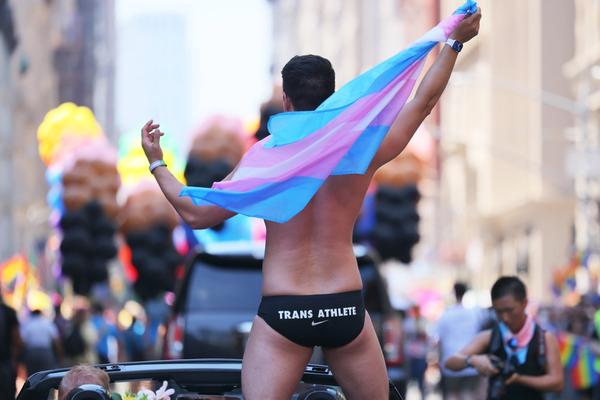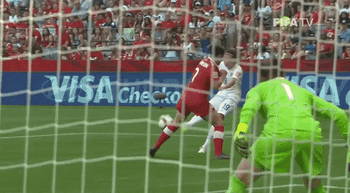Sports beyond the binary

🏳️⚧️ Gender beyond the binary
Living beyond the gender binary isn’t new. Transgender and nonbinary folks have been recognized around the world for hundreds of years and continue to thrive today, despite attacks on their rights from policymakers, governments, and the general public.
Everyone’s experience as a genderqueer person is different. Broadly speaking, transgender describes people whose gender identity differs from the gender they were assigned at birth, and nonbinary encompasses all those who don’t fit the male or female gender binary. One in four LGBTQIA+ youth identify as nonbinary.
In the very binary world of sports, trans and nonbinary youth and athletes’ options to participate at all levels are limited, often forcing them to choose between the sport they love and honoring who they are, a shame considering the mental, physical and social benefits of sports.
🆘 Attacks against trans and nonbinary athlete participation in sports
Transgender and nonbinary folks’ participation in sport continues to be under attack. Hundreds of bills have been proposed in the last decade, and especially this last year, to spread misinformation and stop trans and nonbinary youth from participating in sports and accessing life-saving, gender-affirming care.
- But, youth are organizing to protect themselves, and they’re not alone in the fight, with athletes like soccer powerhouse Megan Rapinoe, tennis legend Billie Jean King, and former NBA star Dwyane Wade speaking out against discriminatory legislation.
Unfortunately, young people and pro athletes alike are experiencing violations of their fundamental rightswhile pursuing mastery in their individual or team sports. Though some institutions have made efforts to break gender barriers with mixed-gender categories, Olympic sports that require a certain number of men and women exclude other genders.
- For another example, Oregon is the only state to explicitly mention nonbinary people in laws protecting student-athletes. Needless to say, there’s a lot of work to be done.
🏆 Athletes paving the way
While the path to gender equity and inclusion in sports is not yet clear, plenty of athletes are out and proud on the track, court, pitch, and in the pool.
Track and field athletes like Cal Calamia, CeCé Telfer, and Nikki Hiltz, continue to blaze the trail and excel in their sport.
- The impact of their visibility? Twenty-seven nonbinary athletes officially registered and ran in a division that represented their gender identity at the 2023 Boston Marathon. Progress.
On the hardwood, the Los Angeles Sparks’ Layshia Clarendon, who uses they/he/she pronouns interchangeably, advocated for their gender-affirming top surgery after the 2020 WNBA bubble season despite struggling mentally with how the league would respond.
- Fortunately, Clarendon announced and received their top surgery with the full support of the WNBA commissioner, WNBA Players Association, and the NY Liberty, their team at the time. How it should be.
Though NWSL soccer player and Canadian national team star Quinn experienced less league and press support in comparison to Clarendon, as the first out, transgender, and nonbinary gold medalist in Olympic history, Quinn is optimistic about change in legislation, rules, gender structures, and mindsets.
From skateboarder Alana Smith to pairs skaterTimothy LeDuc to swimmers Schuyler Bailar and Lia Thomas,there are so many incredible trans and nonbinary athletes leaving their mark in sports. It’s clear that genderqueerness in sports is growing and changing the landscape for the better.
💞 How to support
Trans and nonbinary athletes are here to stay, and sports can help pave the path for these folks to be recognized in their full identities.
Petitioning for Title IX to explicitly protect transgender and nonbinary students, and encouraging sports bodies to update their policies will allow athletes to self-select their competition groups without unnecessary and discriminatory constraints.
Learn more and help others understand how to support trans and nonbinary athletes. As politicians spread misinformation and attack the community, learn more about the policies in your state and what you can do to make sport more inclusive. The aforementioned Bailar and the Human Rights Campaign also provide accurate information and advice on how to be an ally.
Everyone deserves to be seen, heard, represented and loved — in and outside of sports.
Enjoying this article? Want more?

Sign up for The GIST and receive the latest sports news straight to your inbox three times a week.

